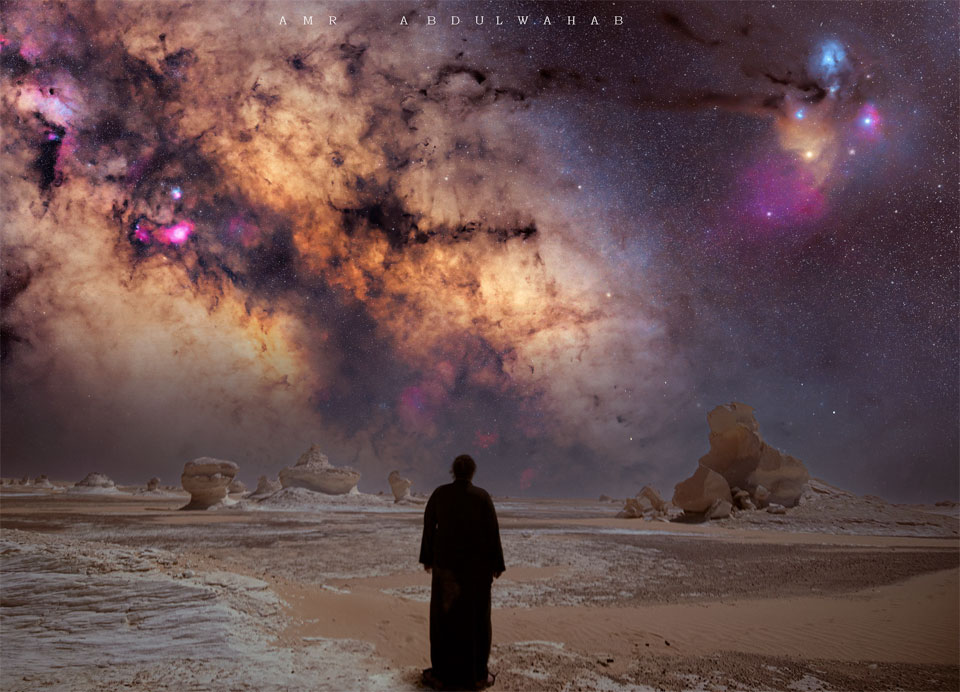Nombre total de pages vues
11/05/2023
AERONUTIQUE - Avions de légende - Concorde - l’excellence technologique
SANTé/MEDECINE - La gueule de bois
ASTRONOMY - Fomalhaut's Dusty Debris Disk
Image Credit: NASA, ESA, CSA, Processing: András Gáspár (Univ. of Arizona), Alyssa Pagan (STScI), Science: A. Gáspár (Univ. of Arizona) et al.
Explanation: Fomalhaut is a bright star, a 25 light-year voyage from planet Earth in the direction of the constellation Piscis Austrinus. Astronomers first noticed Fomalhaut's excess infrared emission in the 1980s. Space and ground-based telescopes have since identified the infrared emission's source as a disk of dusty debris surrounding the hot, young star related to the ongoing formation of a planetary system. But this sharp infrared image from the James Webb Space Telescope's MIRI camera reveals details of Fomalhaut's debris disk never before seen, including a large dust cloud in the outer ring that is possible evidence for colliding bodies, and an inner dust disk and gap likely shaped and maintained by embedded but unseen planets. An image scale bar in au or astronomical units, the average Earth-Sun distance, appears at the lower left. Fomalhaut's outer circumstellar dust ring lies at about twice the distance of our own Solar System's Kuiper Belt of small icy bodies and debris beyond the orbit of Neptune.
10/05/2023
ASTRONOMY - Milky Way over Egyptian Desert
2023 May 10
Image Credit & Copyright: Amr Abdelwahab
Explanation: For ten years the stargazer dreamed of taking a picture like this. The dreamer knew that the White Desert National Park in Egypt's Western Desert is a picturesque place hosting numerous chalk formations sculpted into surreal structures by a sandy wind. The dreamer knew that the sky above could be impressively dark on a clear moonless night, showing highlights such as the central band of our Milky Way Galaxy in impressive color and detail. So the dreamer invited an even more experienced astrophotographer to spend three weeks together in the desert and plan the composite images that needed to be taken and processed to create the dream image. Over three days in mid-March, the base images were taken, all with the same camera and from the same location. The impressive result is featured here, with the dreamer -- proudly wearing a traditional Bedouin galabyia -- pictured in the foreground.
09/05/2023
ASTRONOMY - Shadows of Earth
2023 May 9
Image Credit & Copyright: Marcella Giulia Pace
Explanation: Can you find two Earth shadows in today's image? It's a bit tricky. To find the first shadow, observe that the top part of the atmosphere appears pink and the lower part appears blue. This is because the top half is exposed to direct sunlight, while the lower part is not. The purple area in between is known as the Belt of Venus, even though Venus can only appear on the other side of the sky, near the Sun. The blue color of the lower atmosphere is caused by the Earth blocking sunlight, creating Earth shadow number 1. Now, where is the second Earth shadow? Take a look at the Moon. Do you notice something unusual about the lower left part? That area appears unusually dark because it is in the shadow of the Earth, creating Earth shadow number 2. To be precise, the Moon was captured during a lunar eclipse. This carefully timed image was taken in Sampieri, Sicily, Italy, in July 2018.
08/05/2023
ASTRONOMY - The Spanish Dancer Spiral Galaxy
2023 May 8
Image Credit: ESA, NASA, Hubble; Processing: Detlev Odenthal
Explanation: If not perfect, then this spiral galaxy is at least one of the most photogenic. An island universe containing billions of stars and situated about 40 million light-years away toward the constellation of the Dolphinfish (Dorado), NGC 1566 presents a gorgeous face-on view. Classified as a grand design spiral, NGC 1566 shows two prominent and graceful spiral arms that are traced by bright blue star clusters and dark cosmic dust lanes. Numerous Hubble Space Telescope images of NGC 1566 have been taken to study star formation, supernovas, and the spiral's unusually active center. Some of these images, stored online in the Hubble Legacy Archive, were freely downloaded, combined, and digitally processed by an industrious amateur to create the featured image. NGC 1566's flaring center makes the spiral one of the closest and brightest Seyfert galaxies, likely housing a central supermassive black hole wreaking havoc on surrounding stars and gas.
06/05/2023
GEMMOLOGIE - La précieuse émeraude verte
AERONAUTIQUE - Avions de légende - Le Stampe SV-4, l'avion biplan d'école devenu voltigeur
ART FRACTAL - L'ensemble de Mandelbrot, la plus célèbre fractale
ASTRONOMY - Full Moonlight
2026 January 3 Full Moonlight Image Credit & Copyright : Zhengjie Wu and Jeff Dai ( TWAN ) Explanation: The Full Moon is the brigh...

-
2022 September 26 All the Water on Planet Earth Illustration Credit: Jack Cook, Adam Nieman, Woods Hole Oceanographic Institution ; Data ...
-
2025 May 11 The Surface of Venus from Venera 14 Image Credit: Soviet Planetary Exploration Program , Venera 14 ; Processing & Copyri...








